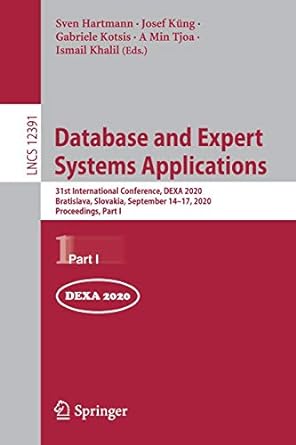Answered step by step
Verified Expert Solution
Question
1 Approved Answer
Given a set of N coins C = { c 1 , c 2 , c 3 , . . . , cN } and
Given a set of N coins C c c c cN and a monetary value M find the smallest subset of C that can pay value K without change
Note that in this problem, C can have duplicates, and a coin can be used only once.
Examples. C
M Answer
M Answer
M Answer No subset meets the requirements
Design a backtracking algorithm to solve this problem. Follow the steps below:
A Draw a tree showing how a bruteforce enumeration algorithm enumerates the solutions for the following instance: C M
Clearly show on the tree what each node and edge represents and which solutions are feasible and which are not.
B Suggest a backtracking strategy to improve the running time of the bruteforce algorithm.
C Provide an example of values for C at least and M that will lead to:
No pruning in the tree.
Maximum pruning in the tree.
Step by Step Solution
There are 3 Steps involved in it
Step: 1

Get Instant Access to Expert-Tailored Solutions
See step-by-step solutions with expert insights and AI powered tools for academic success
Step: 2

Step: 3

Ace Your Homework with AI
Get the answers you need in no time with our AI-driven, step-by-step assistance
Get Started


